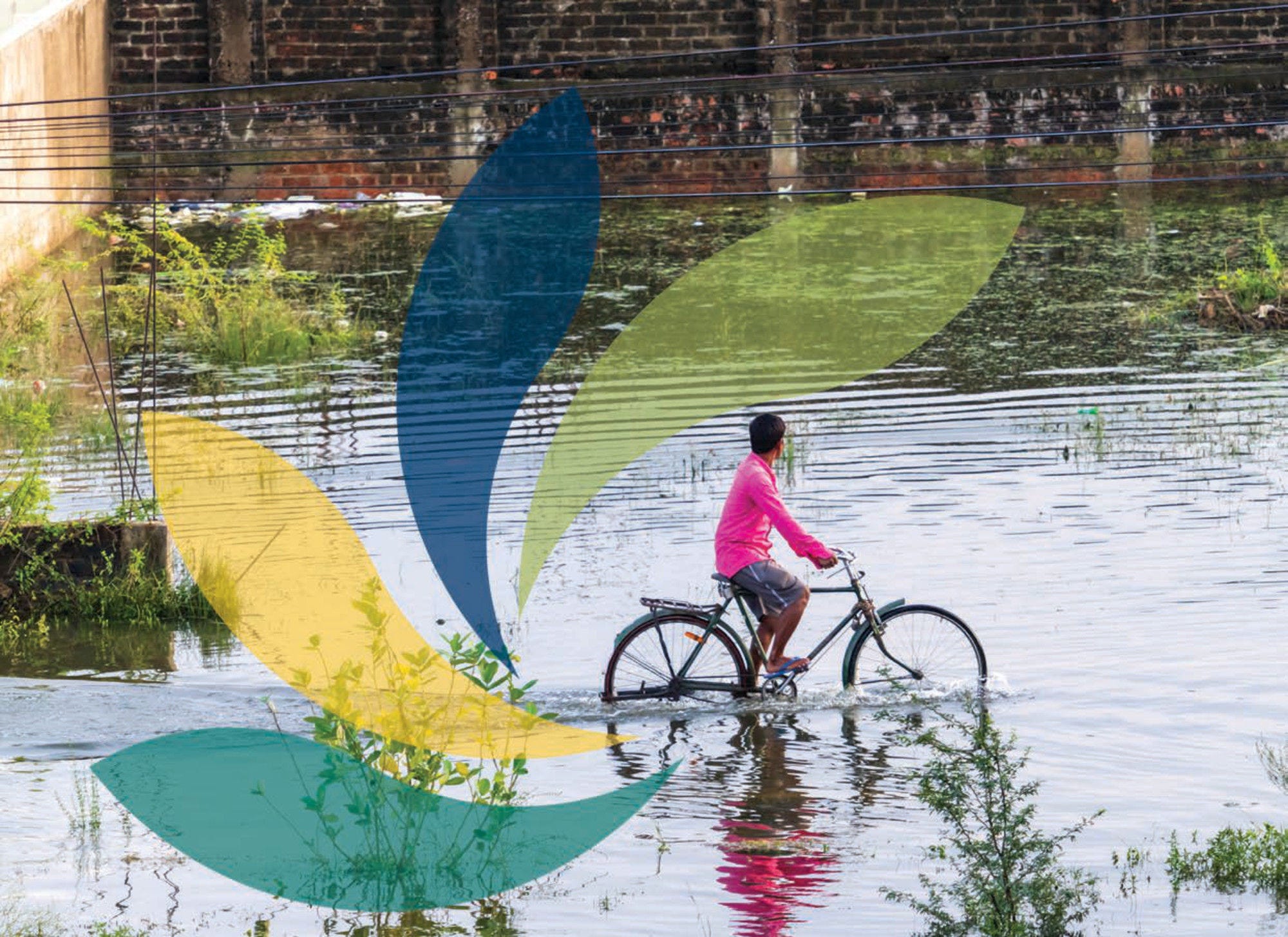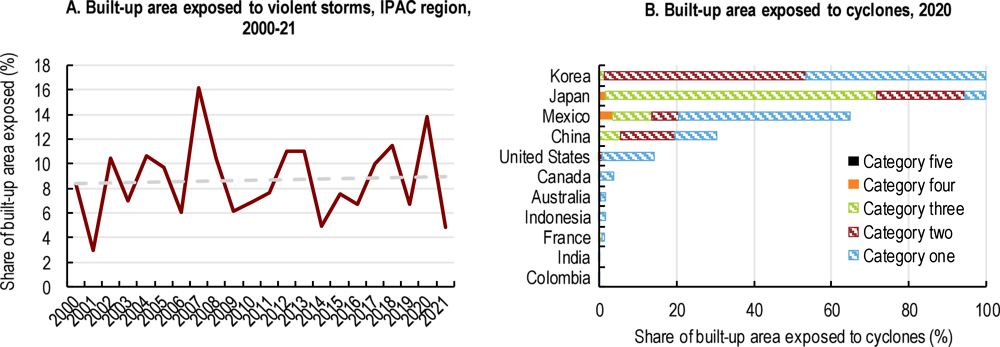Unchecked, climate change is estimated to push 132 million people into poverty over the next ten years (Arga Jafino et al., 2020[30]) and could drive 216 million people to migrate within their own countries by 2050, with hotspots of internal migration emerging as soon as 2030 (World Bank, 2021a[31]). Annual adaptation costs in developing countries are currently estimated at USD 70 billion, increasing to USD 140‑300 billion in 2030 and USD 280‑500 billion in 2050 (EEA, 2022[32]).
Climate-related hazards put populations and economic assets at risk, and climate change further exacerbates the intensity and occurrence of such events. These impacts may be gradual, such as those associated with the effects of rising temperatures or sea levels, or acute and sporadic through shocks, such as flash floods or forest fires. They can affect the economy or human health and well-being directly, through the loss of life or the destruction of economic assets, and indirectly through the deterioration of the multiple ecosystem services provided by the environment.
Possible impacts include increases in the frequency and intensity of hot temperature extremes, marine heatwaves, heavy precipitation, droughts, intense tropical cyclones and reductions in Arctic sea ice, snow cover and permafrost. Further impacts include wildfires, coastal floods and sea-level rises (IPCC, 2021[33]). The immediate impact is increasing temperature, which has a wide-ranging physiological impact on humans. It can result in premature death and disability, especially in urban areas where populations are disproportionately affected due to the urban heat island effect (Tuholske et al., 2021[34]).
In recent years, the global excess death ratio linked to cold temperatures fell by 0.51%, and hot temperatures increased by 0.21%, providing evidence of the direct impact of climate change on human well-being (Zhao et al., 2021[35])). A single heatwave event can result in significant excess mortality (WHO, 2018[36]), and an increasing number of people are affected. OECD data shows that population exposure to extreme heat has been increasing between 1979 and 2021, potentially exposing 52% of the world population in 1979 and 66% in 2021 to varying duration periods of extreme heat (Maes et al., 2022[37]).
Greenhouse gas (GHG) emissions not only affect the global climate, they also lead to other environmental impacts, such as ocean acidification affecting marine ecosystems. Combined with higher temperatures, these forces will dramatically affect the global economy and human welfare. Overall, agricultural yield and food production will be reduced, threatening food security in vulnerable regions (IPCC, 2018[38]). In addition, millions of people could be displaced (Ferris, 2020[39]), and infrastructure destroyed.
These compound effects could substantially negatively affect the global economic outlook and contribute to socio-economic inequality. The World Economic Forum cites one study that shows global annual economic output could be reduced by 4% in 2050 due to climate change and that lower-income and lower‑middle income countries are more likely face GDP losses.1 The economic losses from natural disasters alone are estimated at USD 280 billion in 2021, representing approximately 0.29% of global GDP (Munich RE, 2022[40]).
Although climate change is global, impacts will be unevenly distributed. It is expected that the most acute consequences will be observed in developing countries due to their geographical exposure, greater vulnerability, low income, greater dependence on agriculture and, in general, reduced ability to adapt to new climatic conditions (Stern, 2006[41]; IPCC, 2018[38]) (Maes et al., 2022[37]).
Due to average and extreme temperature changes, agriculture will be particularly affected, and in consequence indigenous peoples and local communities dependent on agricultural or coastal livelihood (IPCC, 2018[38]; 2021[33]). In addition, tropical and subtropical agriculture in developing countries is more climate-sensitive than temperate agriculture, meaning that low-income countries and Africa are also particularly affected (Mendelsohn, 2009[42]).
Figure 13 presents the relationship between economic dependence on agriculture and GDP per capita. The relationship highlights how less developed countries will be directly impacted by climate change. It will affect the livelihood of millions of people in developing countries, generating dramatic impacts that will have consequences on migration flows, epidemics and approximately 3.3‑3.6 billion people around the world who live in areas that are highly vulnerable to climate change (IPCC, 2022[43]). (IPCC, 2022[44]).









